Facing mid-summer heat and dangerously bad air from the California fires (after spending 2+ hours sheltering under rocks from lightening, I can confirm the phrase “historic lightening siege” is accurate) Taryn and I decided to Seattle for a week to visit friends and check out the Cascades. I took Friday off work and in keeping with my recent theme of only climbing uber-classic ridge climbs, we decided to give the North Ridge of Mt. Stuart a go.
In classic David and Taryn style, we rolled up to the trailhead at around midnight and settled in for a short night of sleep. Our alarms went off at 4am and we hit the trail. We crested Ingalls Pass as the first hint of daylight broached the horizon. One of the charms of the late-night trailhead arrival is the complete mystery that surrounds the terrain you are entering. Mother nature’s subsequent unveiling, sometimes slow and teasing, sometimes abrupt and hurried, is made that much more dramatic as dark shadows crystallize into recognizable peaks, offering a first sense of what the day holds.
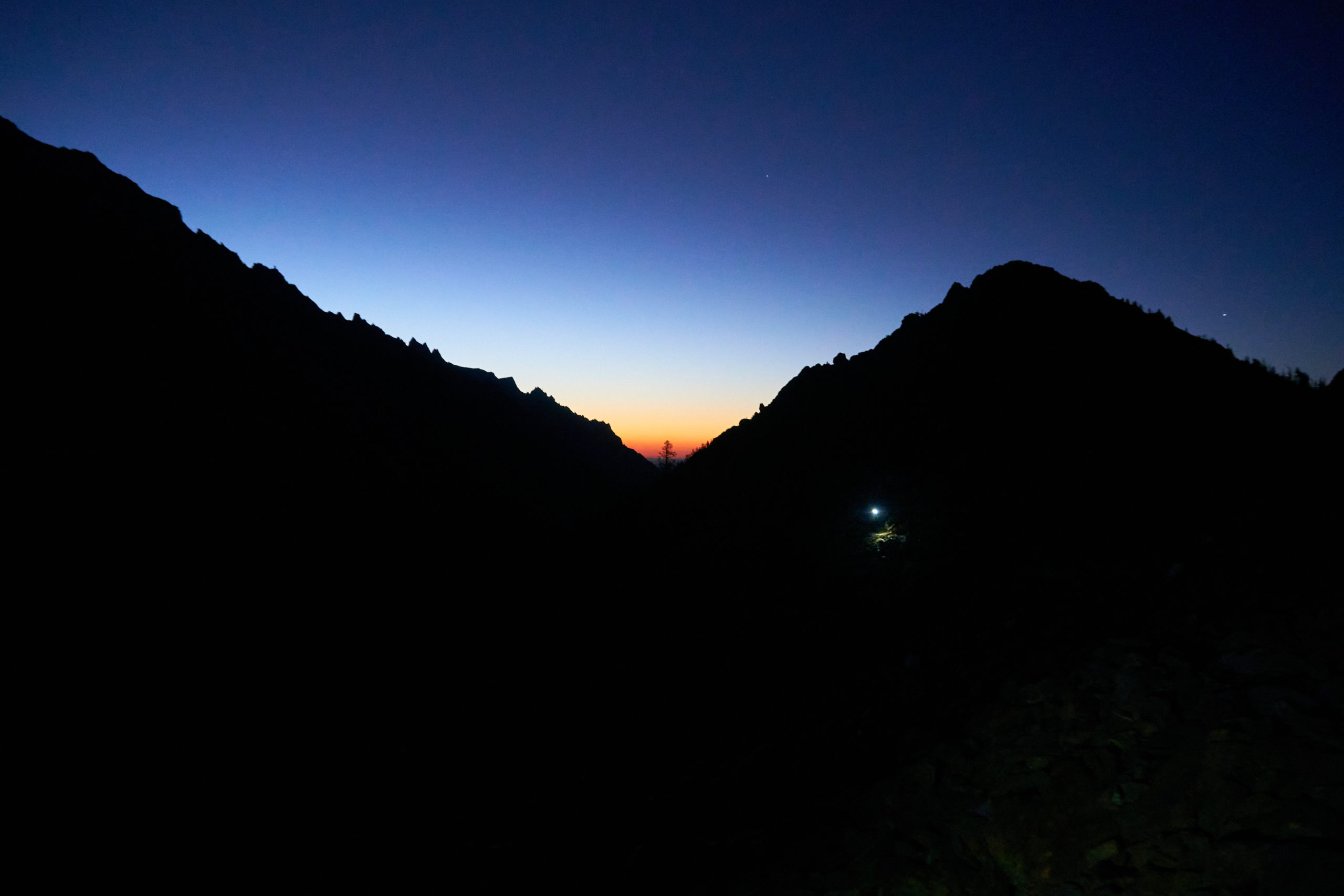
The morning was of the “slow and teasing” variety, and we enjoyed beautiful views of Mt. Rainer and Glacier Peak (I believe, the Cascades are much more vast than the Wasatch or Tetons I’ve become accustomed to) as the sun rose around us. Despite the range’s reputation for being crowded, we saw only a couple other people on the approach in, and the miles passed quickly as we made our way around Lake Ingall and over Stuart Pass. The terrain became more rugged and our pace slowed as we made our way over talus and up Goat Pass. From atop Goat Pass we got our first views of the north side of Mt. Stuart and neighboring peaks, their long, elegant ridges spilling down into Mountaineer Creek.
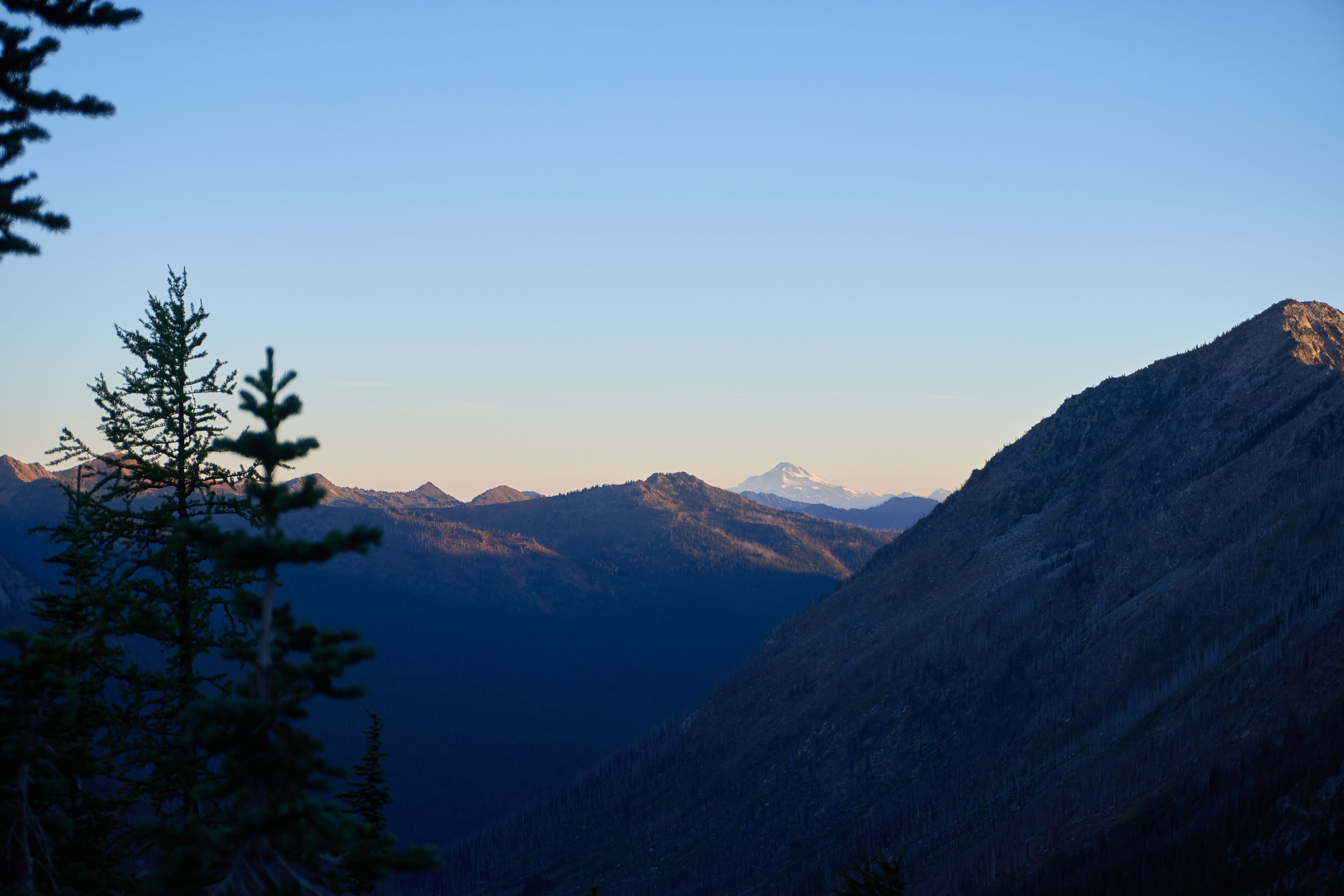

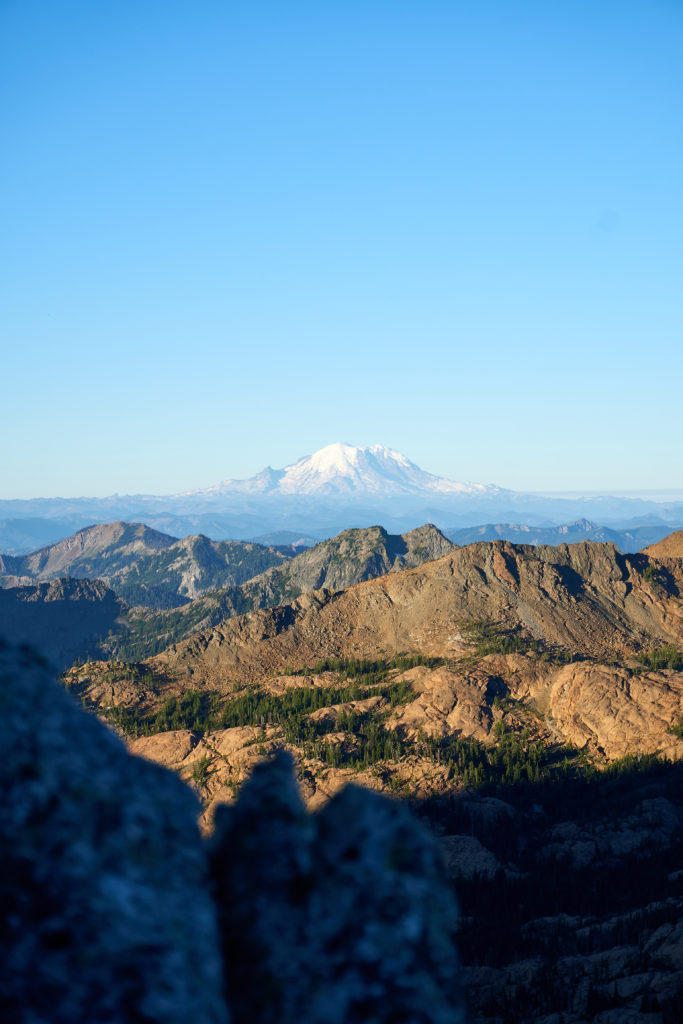
The descent from Goat Pass to the base of the North Ridge took far longer than expected, giving us our first hint at the scale of the climb ahead, but after a bit more than an hour we found ourselves situated under the opening pitches, eager to get started.
I started up the first pitch, a fun 5.8, and was immediately impressed with the rock. Reminiscent of Bugaboo granite, the rock on the North Ridge of Mt. Stuart forms splitter, almost-concave cracks that eat up good cam placements and solid hand-jams alike. Happy to be finally climbing, I ended up linking the three opening pitches, my light rack aided by the plentiful stuck gear scattered throughout the opening crack systems. The squeeze on the first pitch was awkward as reported and I dropped my pack to a sling between my legs to fit, but the rest of the climbing was brilliant, with great jams and solid feet. Taryn soon joined me at the belay.
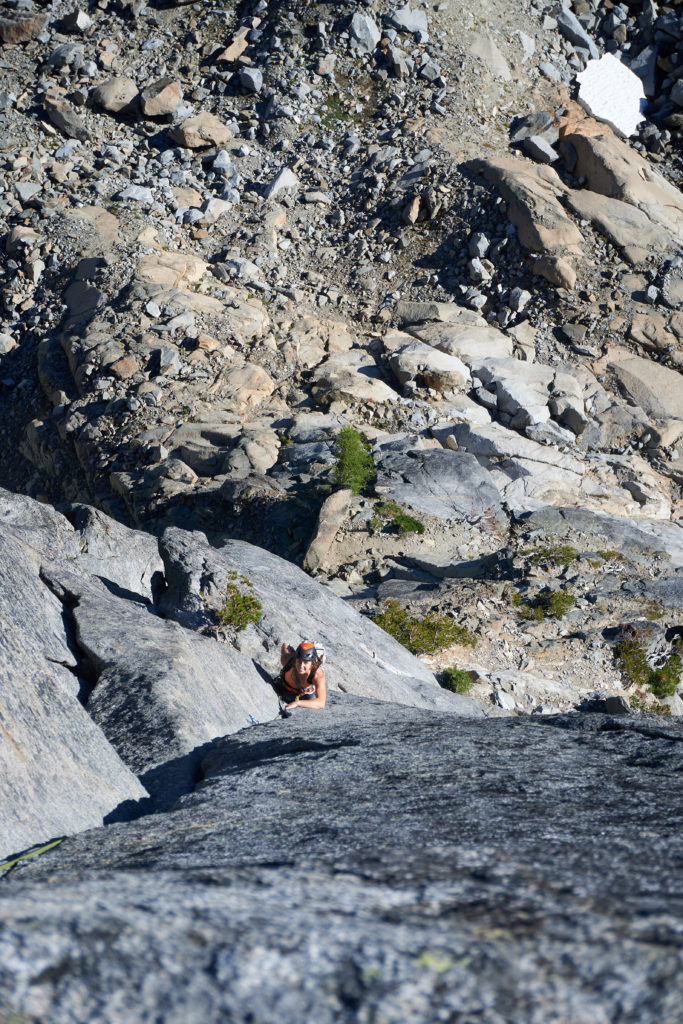
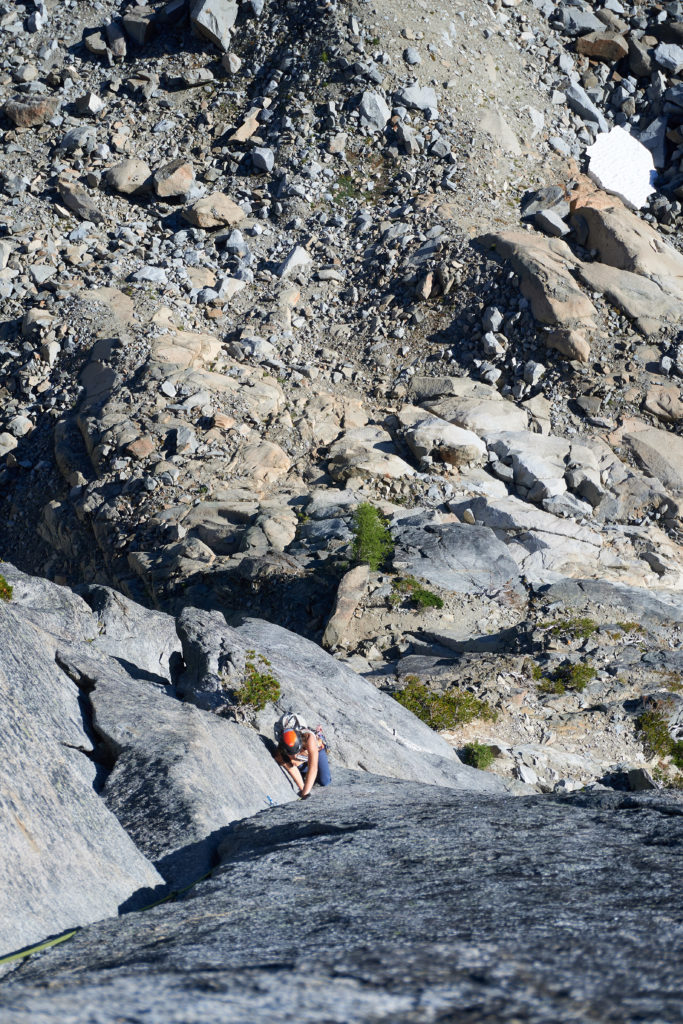
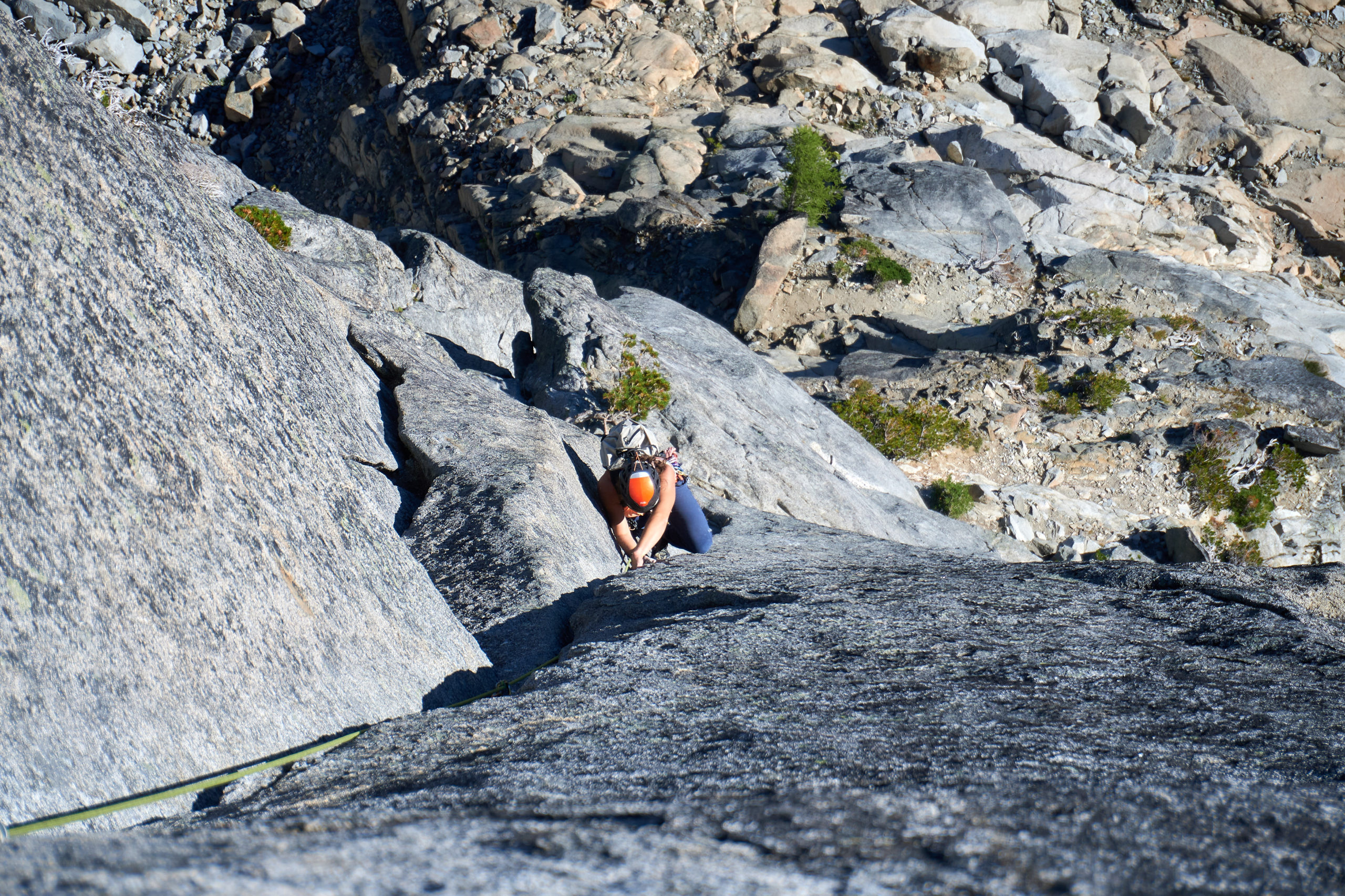
From there we switched to simul-climbing mode. The ridge was wider than I expected for the first block, but the route finding was straightforward, and it was a joy to move quickly over the 4th and easy 5th class terrain. After maybe 600 feet of climbing I reached a wider, low angle break in the ridge. Running low on gear I elected to stop and bring Taryn up so we could hand-off gear and grab some food and water. Beyond the low angle break the ridge rose sharply and it was unclear if it was better to climb to the left or right of the ridge line. I chose to go climber’s left and quickly found myself on steep rock. While still moderate climbing, the rock was covered in lichen. Deeming it unwise to simul-climb through it, I asked Taryn for a real belay. Luckily the vertical rock was short lived and I built an anchor and belayed Taryn up.

Realizing our mistake, we traversed to the right side of the ridge and found ourselves back on the moderate climbing we had found in the first block. The upper ridge before the gendarme contained the best climbing of the entire route. While still mostly 4th and easy 5th class, the ridge narrowed and the climbing became more and more whimsical, requiring hand traverses over knife-edge sections and imaginative climbing up, down and around little spires of rock. A final slab section before the gendarme, split by a perfect hand crack, provided a perfect victory lap to cap off this brilliant section of ridge climbing.
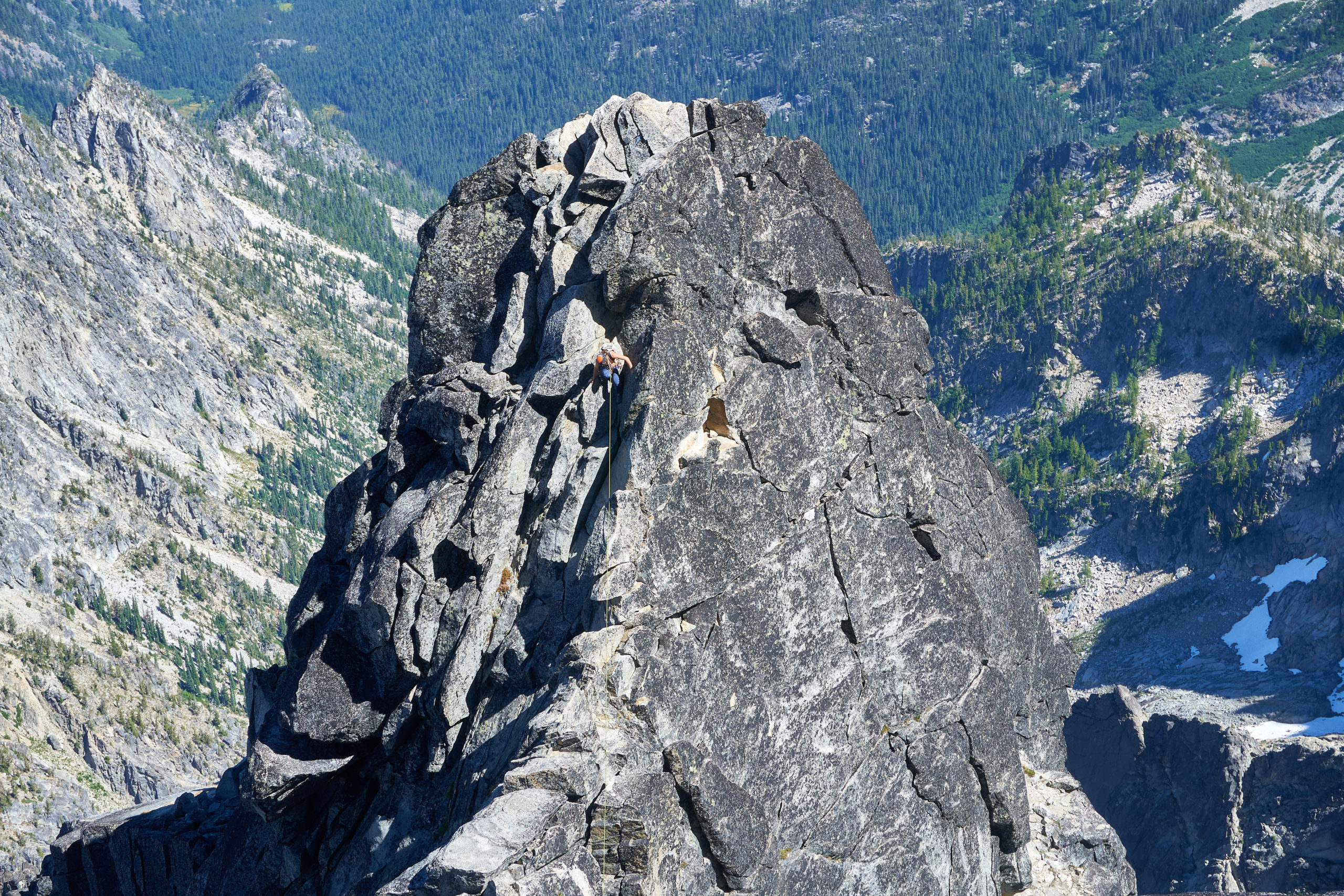

We paused for some food and water underneath the gendarme and then headed up the perfect 5.9 layback first pitch. The climbing on this pitch was phenomenal, with good feet and some handjams taking away the usual stress of laybacking. The second pitch started with an exposed traverse to the right, overlooking Stuart Glacier far below, and then ended with a short wide crack. I was happy to have a #3 cam for the start of the wide section, but found the old fixed #4 plenty confidence inspiring for the easy exit from the crack. Both Taryn and I found the two gendarme pitches to be considerably easier than the 5.9 third pitch at the start of the route. We did the upper pitches as two pitches so we could savor the climbing and position, but both pitches are short and a party pressed for time could easily link them.
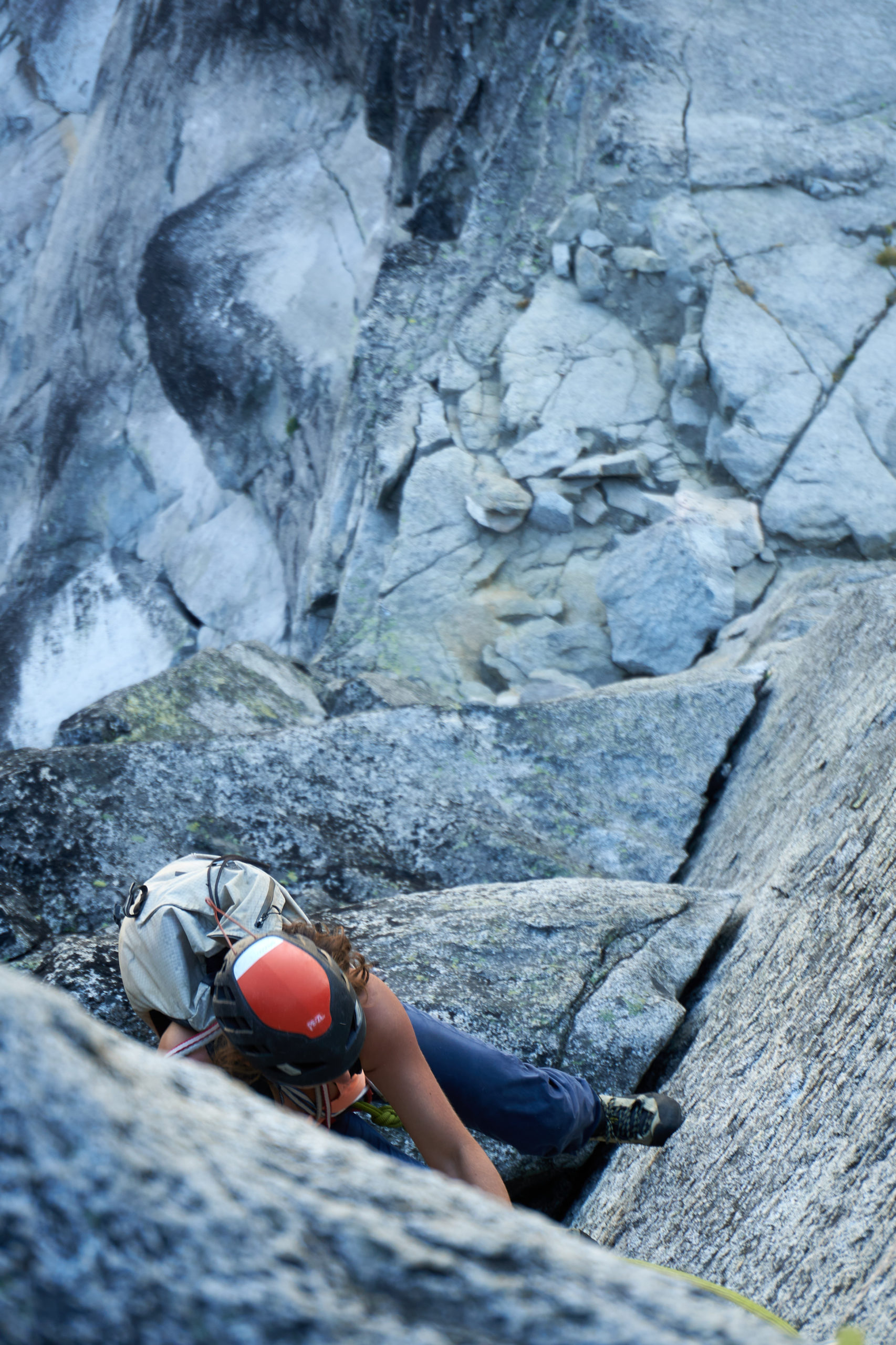
From there, Taryn took over the lead for a final block of simul-climbing. She led us through a short climbing and a final section of 5.6/5.7 before charging up the remaining 4th class to the summit. We topped out around 3:15pm and spent a while soaking up the amazing views of Mt. Rainer and the Cascades. Standing at 9,415 feet, Mt. Stuart is quite prominent and, while not a tower by any means, has no truly easy way up it, making it a more satisfying summit than I had expected.
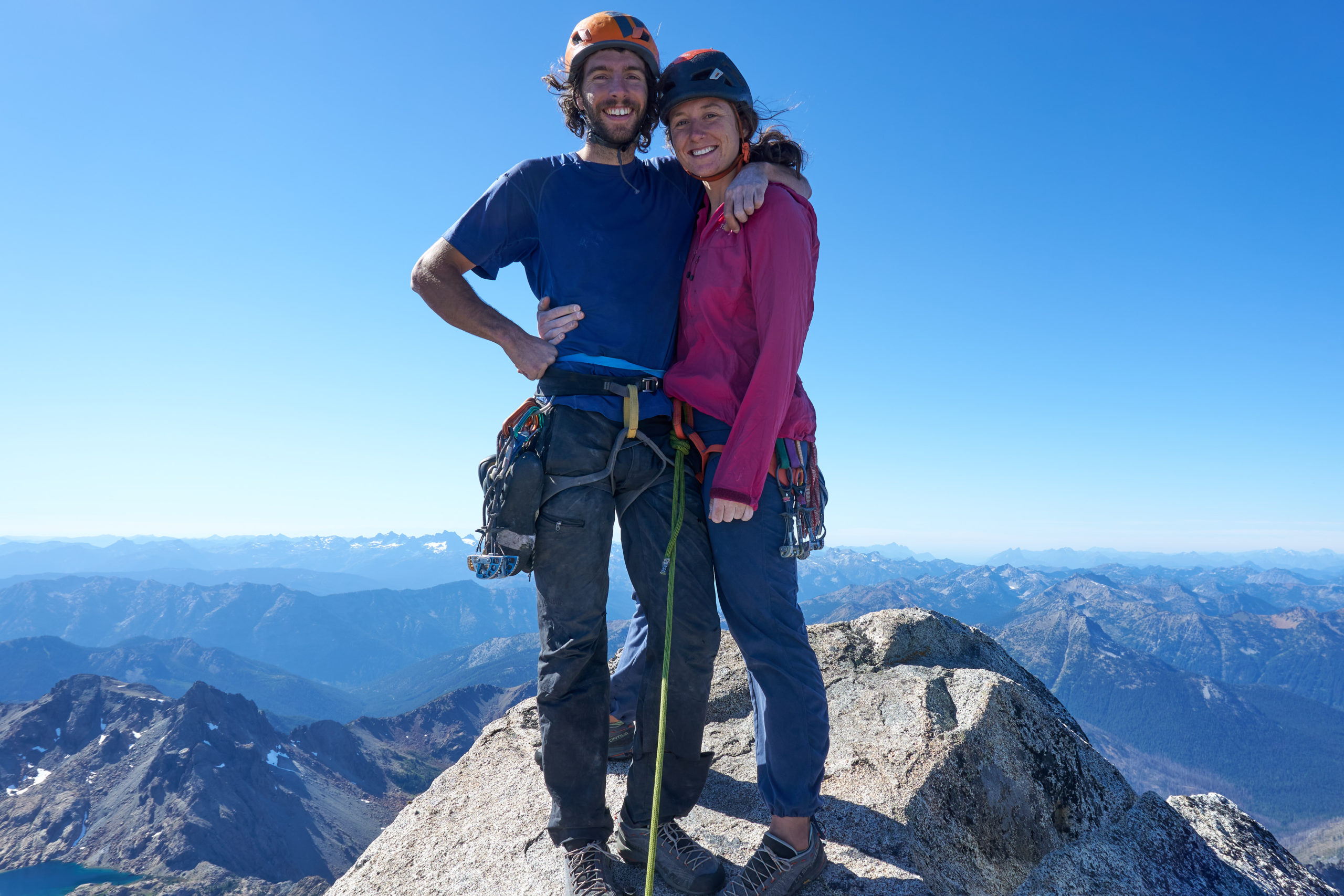
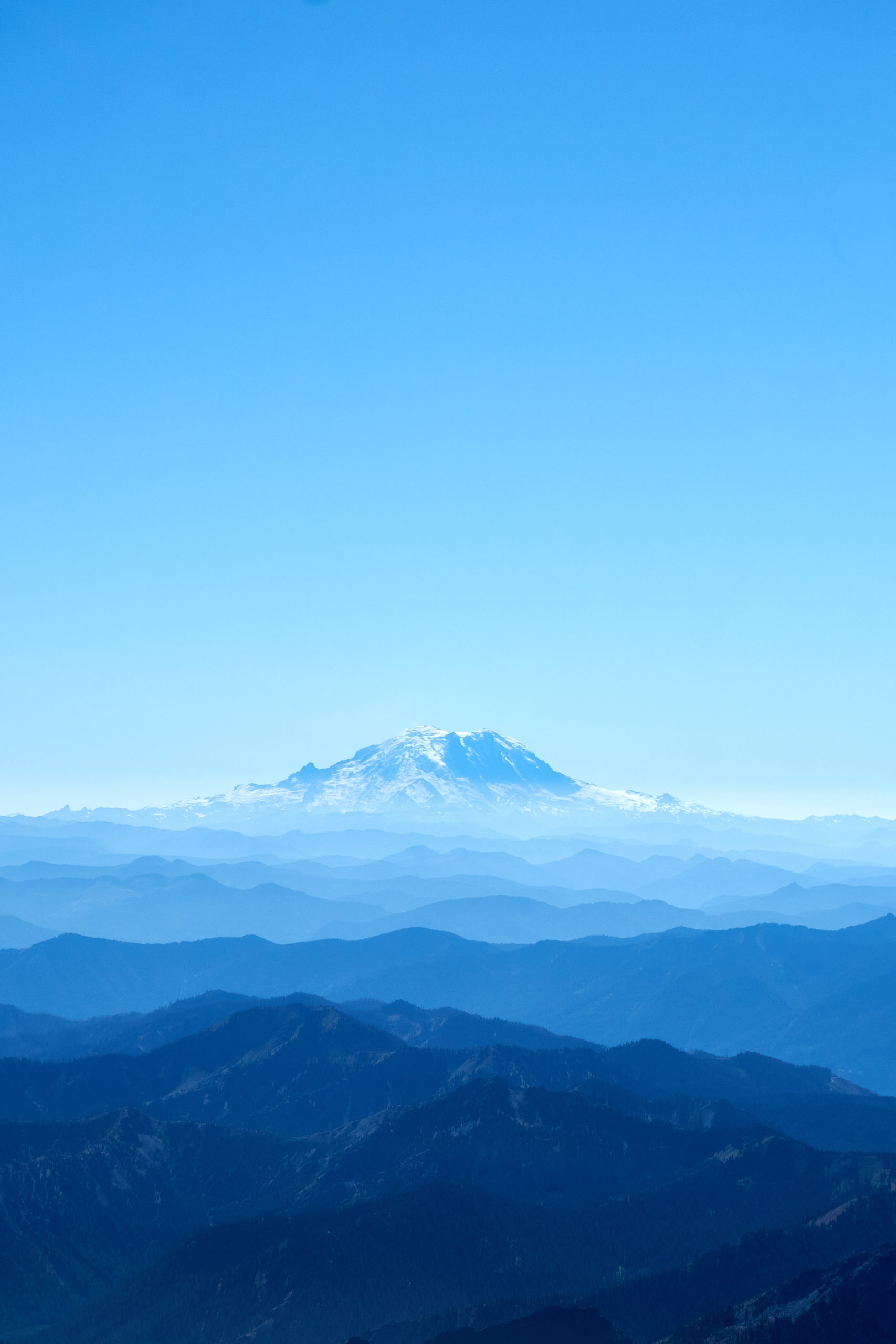
The prominence and ruggedness of Mt. Stuart also means a long descent. The Cascadian Couloir was easy to find, but loose and dusty to descend. At first the scree surfing was fun, but we soon grew sick of the rocks in our shoes and slippery footing, and the descent dragged on and on.
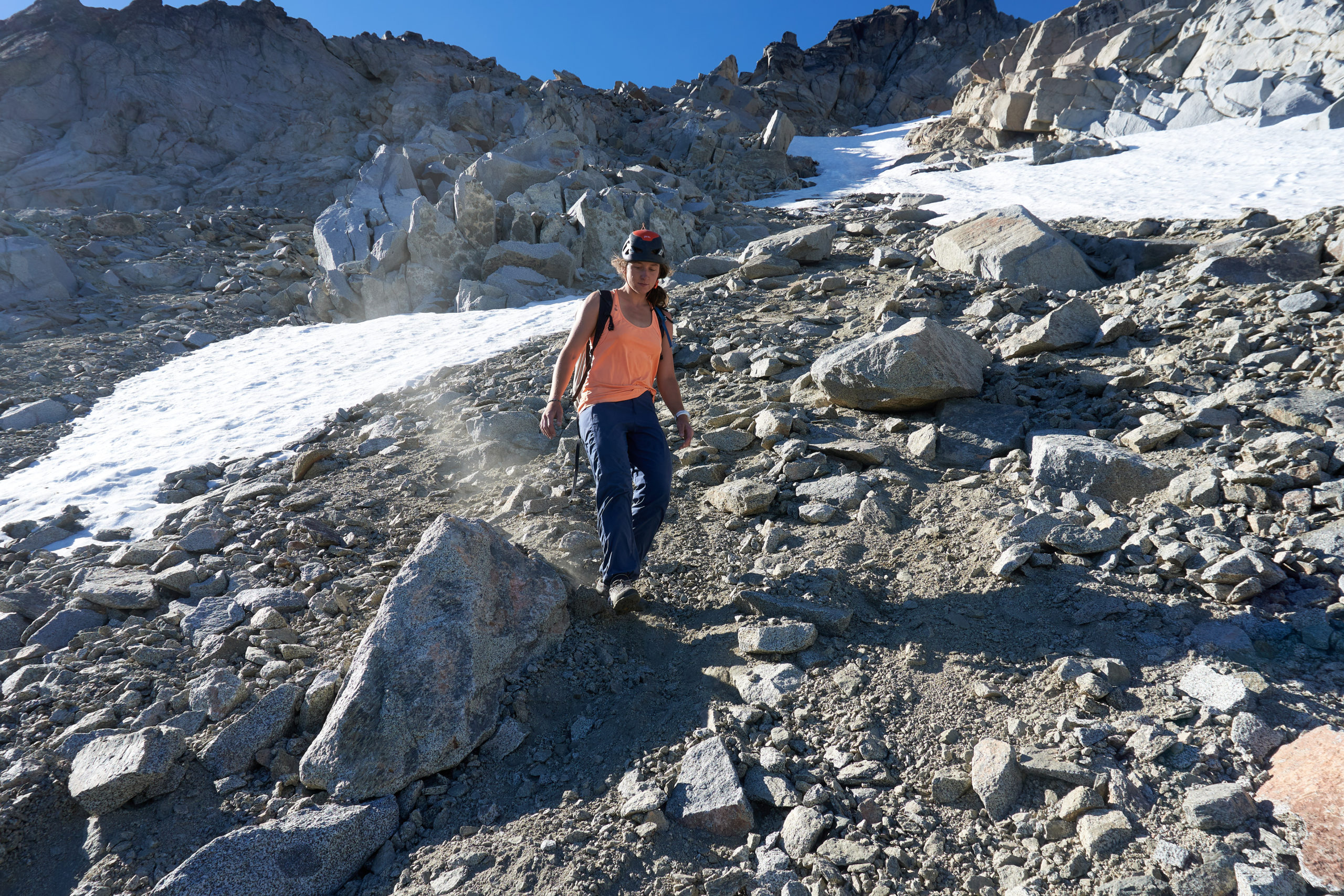
After almost two hours we reached Ingalls Creek Trail and we were able to fill our now-empty water. A number of trip reports had complained about the final climb out over Longs Pass, but, perhaps because we still had daylight or just because we were relieved to be off the scree, we found it went quite quickly. As we ascened, it was a joy to look back across the valley at the flanks of Mt. Stuart knowing we had seen so many sides of the mountain (both literally and metaphorically) in our day out.
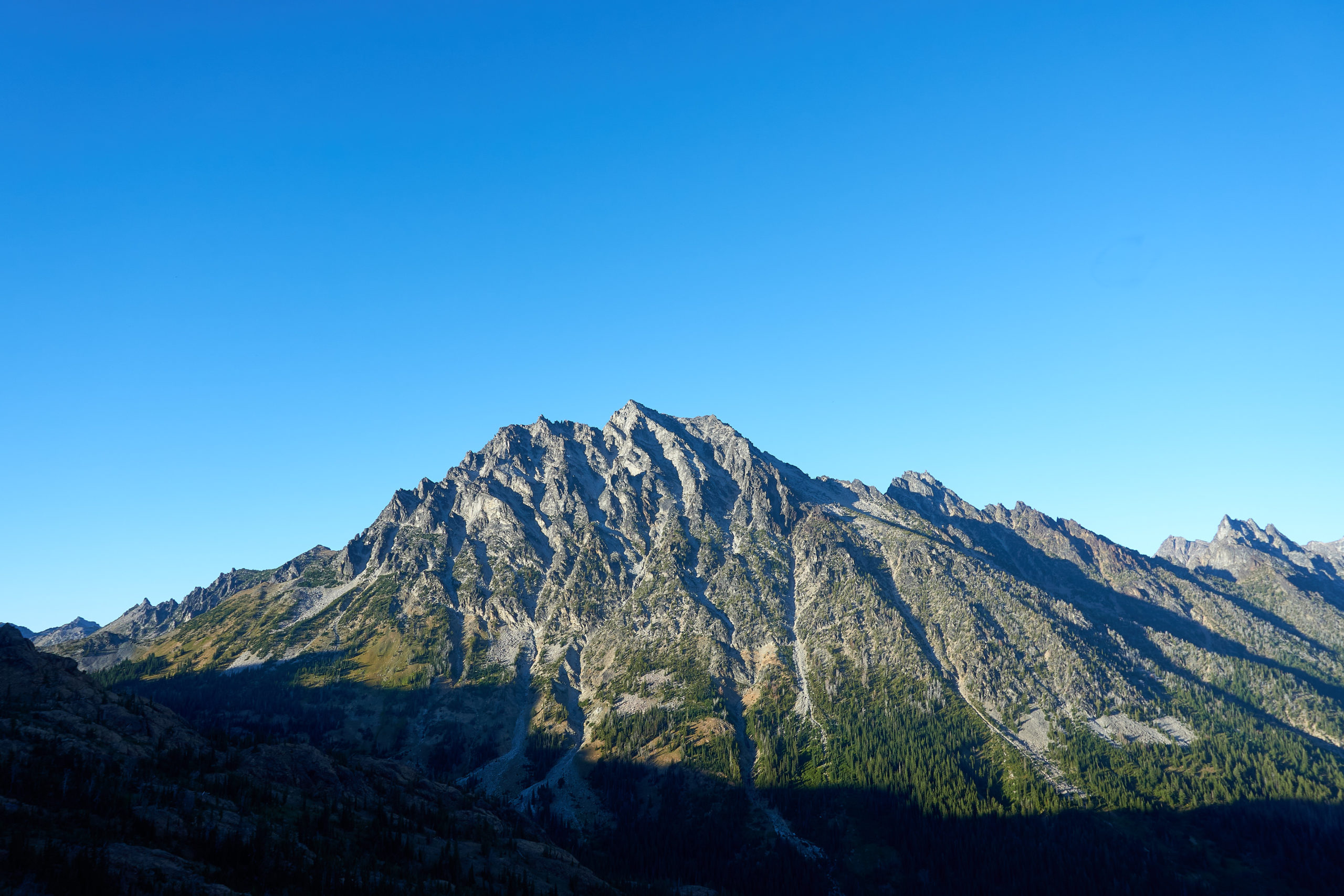
We arrived back at the car just before 8pm as the final rays of sun disappeared behind the mountains. This day was immensely enjoyable. The approach and the landscape was beautiful, the rock world class. The climbing was engaging, varied and never scary, and the trek to the car was no worse than expected. We had the route essentially to ourselves, passing only one other party that was doing just the upper ridge, making this our least crowded 50 classic to date. After a summer of racing incoming weather, it felt blissful to be able to take our time and soak up the climbing.
Its always dangerous sampling the ultra-classics first, but if this climb is indicative of PWN climbing I can’t wait to come back! All around a perfect day.
Some numbers:
* 17 miles, 9,000 ft of vert (my watch didn’t die this time!)
* 15:33 car to car
* Rack: 8.5mm x 70m rope, singles of 0.3-3 with doubles from 0.4 through 0.75, 5 nuts, 11 single length slings, 3 double length slings (felt like a perfect amount of gear, plenty for long simul blocks, just enough to link the first three pitches)
* Splits:
** Car to Ingalls Pass: ~1:15
** Ingalls Pass to Stuart Pass: ~1:45
** Stuart Pass to Goat Pass: ~0:30
** Goat Pass to base of climb: ~1:30
** Base of climb to base of gendarme: ~4:40
** Base of gendarme to summit: ~1:45
** Summit to Ingall Creek: ~2:00
** Ingall Creek to Long Pass: ~1:10
** Long Pass to Car: ~0:50
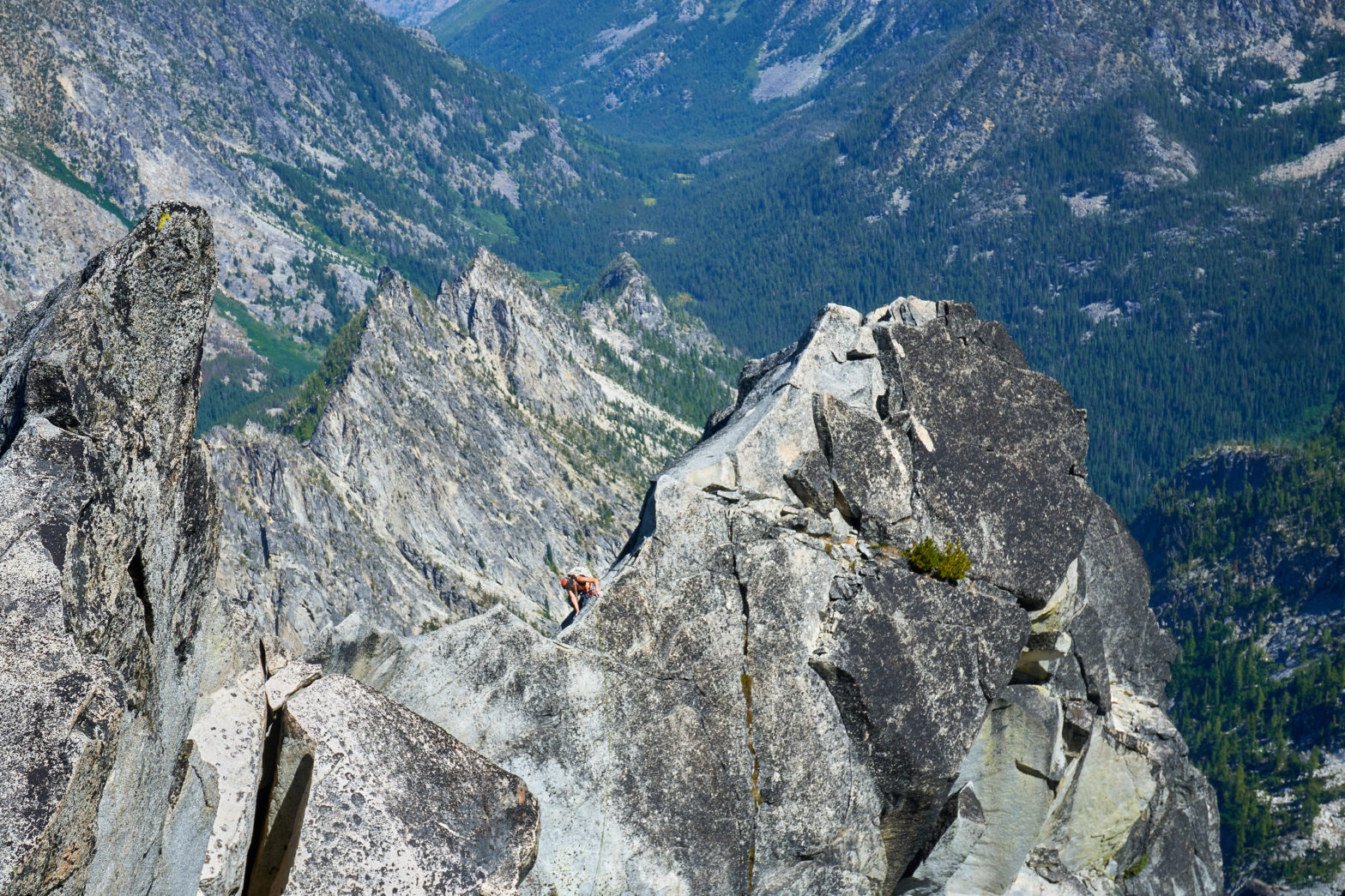
Leave a Reply